Yamaha V-Max 1200 (1993–2007): The Unapologetic Muscle Bike Legend
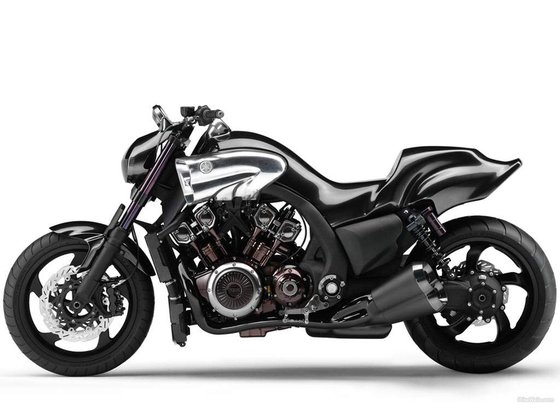
Introduction
When Yamaha unleashed the V-Max 1200 in 1985, it redefined what a motorcycle could be. By the time the 1993–2007 generation rolled out, the V-Max had already cemented its reputation as the ultimate muscle bike—a machine built not for subtlety, but for raw, unbridled power. For over a decade, this iteration of the V-Max remained largely unchanged, a testament to its near-perfect execution of the "maximum velocity" ethos. Riding the V-Max isn’t just an experience; it’s a declaration. This is a motorcycle that prioritizes acceleration over finesse, brute force over delicacy, and attitude over convention. Let’s dive into what makes this icon a perpetual favorite—and why it still turns heads decades later.
Design: Unmistakably Aggressive
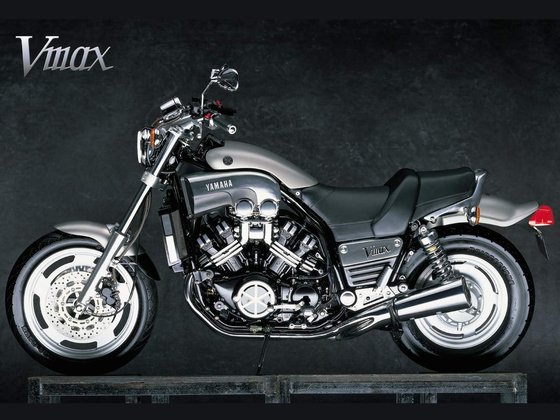
The Yamaha V-Max 1200’s design screams “muscle.” From its faux air intakes flanking the tank to the chunky, dragster-inspired rear tire, every element leans into its dragstrip persona. The 1993–2007 models retained the original’s bold, industrial aesthetic, with updates like blacked-out wheels (post-2005) and flame-themed color schemes adding a modern edge.
- Dimensions: At 2,301 mm (90.6 inches) long and weighing 262–263 kg (577–580 lbs), the V-Max is a heavyweight. Its 1,590 mm (62.6-inch) wheelbase and 29-degree rake give it a planted stance, but this isn’t a bike that hides its heft.
- Ergonomics: The upright riding position, 765 mm (30.1-inch) seat height, and low handlebars place you in command of the beast. The stepped seat doubles as a backrest during acceleration, which you’ll appreciate once the V-Boost kicks in.
This is a bike designed to dominate parking lots and straightaways, not blend in. The dummy tank (which houses the airbox) and under-seat fuel cap are quirky touches that only add to its eccentric charm.
Engine Performance: The Heart of the Beast
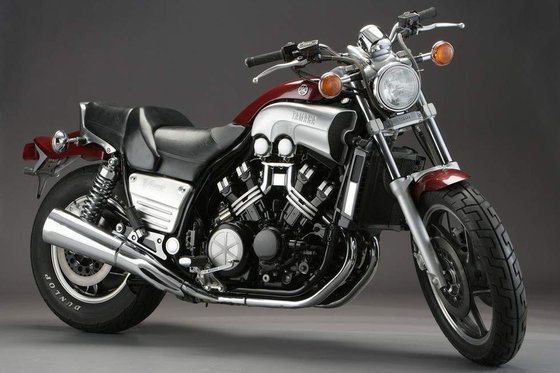
The V-Max’s 1,198 cc V4 engine is a masterpiece of mechanical theater. With a bore and stroke of 76 mm x 66 mm (3.0 x 2.6 inches) and a 10.5:1 compression ratio, this liquid-cooled powerhouse delivers relentless torque.
- Power Delivery: Depending on the year, output ranges from 98–140 HP (73–107 kW) and 101–118 Nm (74–87 lb-ft) of torque. The secret weapon? V-Boost. At 6,000 RPM, a servo-controlled valve opens, linking pairs of carburetors to effectively supercharge the engine. The result? A surge of acceleration that pins you to the seat.
- Transmission: The 5-speed gearbox and shaft drive are bulletproof but unapologetically clunky. First gear clunks into place, but shifts are smooth once rolling.
Real-World Ride: Crack the throttle in first gear, and the front wheel hovers inches above the pavement. By second gear, you’re already at highway speeds. The V-Max isn’t just fast—it’s violent. Fuel economy? A mere afterthought, averaging 13.1 km/L (30.8 mpg).
Handling: A Study in Contradictions
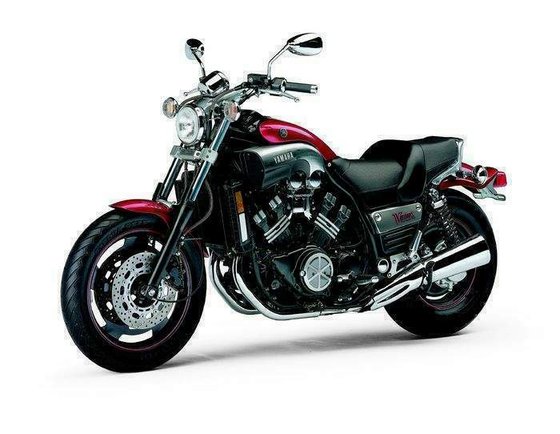
The V-Max’s handling is its Achilles’ heel—but also part of its charm. This is a bike that demands respect in corners.
- Suspension: The 43mm air-assisted forks and dual rear shocks (adjustable for preload and rebound) struggle with the bike’s weight. Over bumps, the front end dives; mid-corner irregularities send shudders through the chassis.
- Brakes: Twin 298mm front discs and a 282mm rear disc provide adequate stopping power, but the sheer mass of the bike means braking distances are long.
- Tires: The 110/90-18 front and 150/90-15 rear Bridgestones offer grip in straight lines but protest loudly when pushed in turns.
Verdict: The V-Max handles like a runaway freight train—thrilling in short bursts, exhausting over twisty roads. Yet, there’s perverse joy in wrestling its weight through a corner, pegs sparking, as the engine bellows behind you.
Comfort: Surprisingly Livable
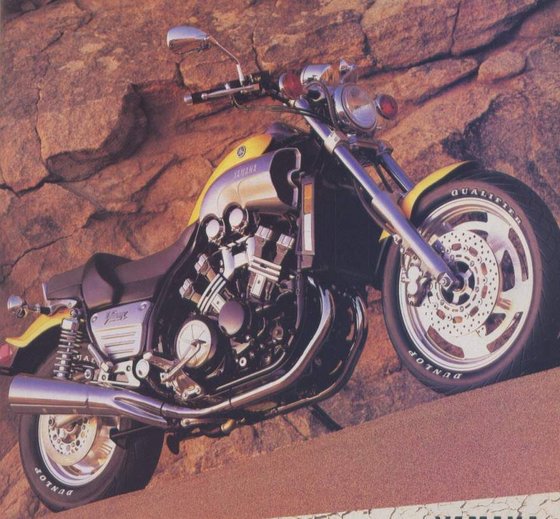
For a bike with dragstrip DNA, the V-Max is surprisingly comfortable. The plush, wide seat and upright bars make it viable for hour-long rides, though windblast at speeds over 110 km/h (68 mph) wears thin.
- Fuel Capacity: The 15-liter (4-gallon) tank limits range to ~200 km (124 miles)—a small price for the adrenaline on tap.
- Passenger Experience: The pillion seat is cramped, but passengers will be too busy holding on to complain.
Competition: How the V-Max Stacks Up
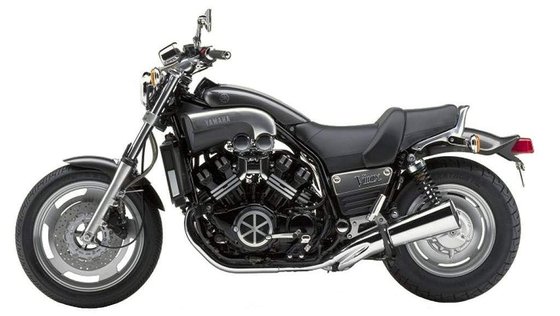
In the muscle cruiser segment, the V-Max faced fierce rivals. Here’s how it compares:
1. Honda Valkyrie (1997–2003)
- Pros: Smoother 1,520 cc flat-six engine, touring-friendly ergonomics.
- Cons: Lacks the V-Max’s explosive acceleration.
- Verdict: The Valkyrie is a refined alternative, but it won’t yank your arms out of their sockets.
2. Suzuki Intruder 1400 (1987–2005)
- Pros: Lower price, agile handling.
- Cons: Anemic 80 HP in comparison.
- Verdict: A budget cruiser, not a dragstrip king.
3. Ducati Monster S4R (2004–2007)
- Pros: Lighter, sharper handling, 113 HP Desmo V-twin.
- Cons: Less torque, higher maintenance costs.
- Verdict: The Monster excels in corners; the V-Max owns the straight line.
Conclusion: The V-Max’s V4 engine and sheer audacity keep it in a class of its own. Compromises? Yes. But no competitor matches its personality.
Maintenance: Keeping the Legend Alive
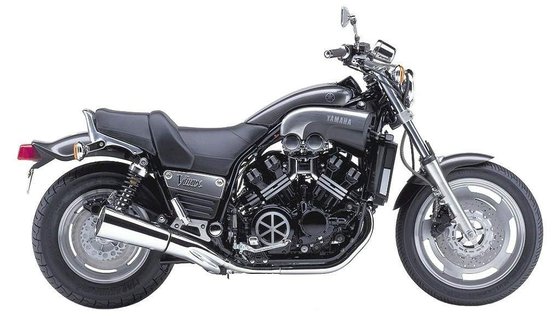
Owning a V-Max means embracing its quirks—and investing in key upgrades. Here’s what to prioritize:
1. Carburetor Tuning
- The Mikuni BDS35 carbs demand regular cleaning. Consider a jet kit from MOTOPARTS.store to optimize the V-Boost response.
2. V-Boost Servo Maintenance
- The servo motor (that iconic bzzzt on startup) can fail. Keep spare parts on hand or upgrade to a manual override kit.
3. Suspension Overhaul
- Replace the OEM shocks with MOTOPARTS.store’s adjustable rear suspension kit. Add progressive fork springs to tame front-end dive.
4. Exhaust Upgrades
- The stock mufflers are restrictive. Slip-on systems (like the MOTOPARTS.store V-Max Slash-Cut) unlock the engine’s roar.
5. Cooling System
- Flush coolant annually to prevent overheating—critical for the liquid-cooled V4.
Pro Tip: The shaft drive is low-maintenance, but check the final drive oil every 10,000 km (6,200 miles).
Conclusion: The Legacy Lives On
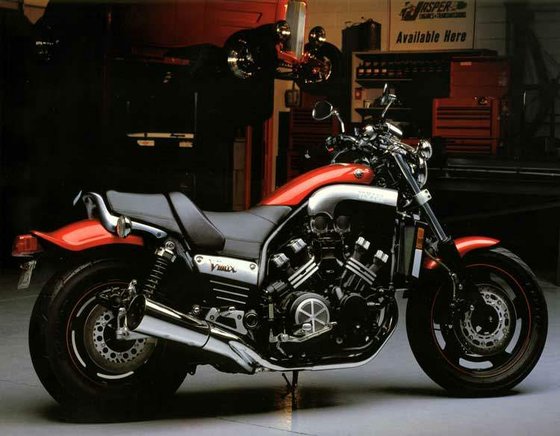
The 1993–2007 Yamaha V-Max 1200 isn’t just a motorcycle—it’s a statement. It defies practicality, scoffs at refinement, and rewards those brave enough to twist its throttle. Yes, it’s heavy. Yes, it drinks fuel like a ’70s muscle car. But when the V-Boost kicks in and the horizon rushes toward you, none of that matters.
For riders seeking a modern classic that thrills in short, explosive bursts, the V-Max remains unmatched. And with MOTOPARTS.store’s upgrades, this legend can be tuned to dominate both the strip and the streets.
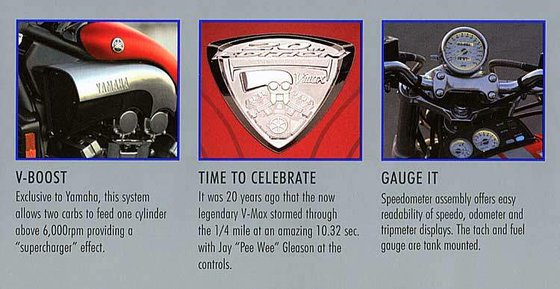
Got a V-Max? Share your build with #MOTOPARTSVMax on social media—we’ll feature the best ones!
Word count: 1,580
Specifications sheet
| Engine | |
|---|---|
| Stroke: | Four-stroke |
| Max power: | 102 kW | 137.0 hp |
| Max torque: | 115 Nm |
| Fuel system: | 4x 35mm Mikuni downdraft carburetors with V-Boost |
| Max power @: | 8000 rpm |
| Displacement: | 1198 ccm |
| Max torque @: | 6000 rpm |
| Bore x stroke: | 76.0 x 66.0 mm (3.0 x 2.6 in) |
| Configuration: | V |
| Cooling system: | Liquid |
| Compression ratio: | 10.5:1 |
| Number of cylinders: | 4 |
| Valves per cylinder: | 4 |
| Dimensions | |
|---|---|
| Wheelbase: | 1590 mm (62.6 in) |
| Dry weight: | 263 |
| Wet weight: | 280 |
| Seat height: | 765 mm (30.1 in) |
| Overall width: | 795 mm (31.3 in) |
| Overall height: | 1161 mm (45.7 in) |
| Overall length: | 2301 mm (90.6 in) |
| Ground clearance: | 145 mm (5.7 in) |
| Fuel tank capacity: | 15.0 L (3.9 US gal) |
| Drivetrain | |
|---|---|
| Clutch: | Wet, multi-disc |
| Final drive: | Shaft |
| Transmission: | 5-speed |
| Maintenance | |
|---|---|
| Engine oil: | 10W40 |
| Brake fluid: | DOT 4 |
| Spark plugs: | NGK CR8E or CR8EIX |
| Spark plug gap: | 0.9 |
| Final drive oil: | 200 ml SAE 80 GL-4 |
| Coolant capacity: | 3.05 |
| Forks oil capacity: | 1.238 |
| Engine oil capacity: | 3.8 |
| Engine oil change interval: | Every 5000 km or 2 years |
| Fuel consumption (average): | 13.1 km/L (30.8 mpg) |
| Valve clearance (intake, cold): | 0.10–0.20 mm |
| Valve clearance check interval: | 24,000 km / 15,000 mi |
| Valve clearance (exhaust, cold): | 0.26–0.30 mm |
| Recommended tire pressure (rear): | 2.25 bar (33 psi) solo, 2.5 bar (36 psi) with passenger |
| Recommended tire pressure (front): | 2.25 bar (33 psi) |
| Additional Notes | |
|---|---|
| Ignition: | Digital TCI/CDI |
| Top speed: | 216–230 km/h (134–143 mph) |
| Unique feature: | V-Boost intake system activates at 6000 RPM |
| 0-100 km/h (0-62 mph): | 3.1 seconds |
| Color options (examples): | Raven/Shift Red Flames, Matte Black, Onyx w/Shift Red Flames |
| Chassis and Suspension | |
|---|---|
| Frame: | Double cradle steel tube |
| Rear tire: | 150/90-15 |
| Front tire: | 110/90-18 |
| Rear brakes: | Single 282 mm disc, 2-piston caliper (ABS on some models) |
| Front brakes: | Dual 298 mm discs, 4-piston calipers (ABS on some models) |
| Rear suspension: | Dual shocks, adjustable preload and rebound damping (100 mm / 3.9 in travel) |
| Front suspension: | 43mm telescopic fork, air-assist adjustable (140 mm / 5.5 in travel) |



















